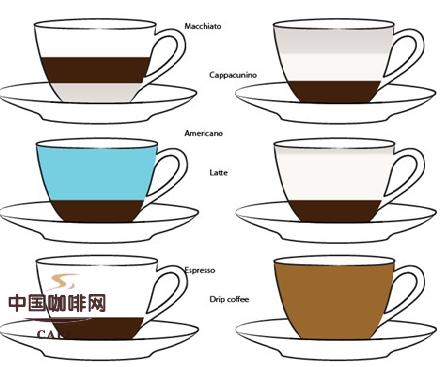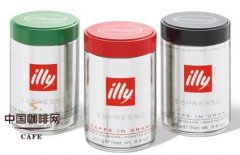Coffee common sense about the difference between drip coffee and espresso

Cafes, cafes, or coffee shops crowded with all kinds of people are always good places for people to communicate or learn. The earliest use of the coffee shop was to provide a place for wise men to discuss problems. The coffee shop used to be called "Penny University" because people can enter the cafe for a penny and exchange information and ideas with people with lofty ideals.
The wooden coffee shop of Charles II, 1674.
Today, you will see today's wise men-usually college students-chatting in coffee shops from dawn to dusk with their cell phones and laptops in their hands. Besides the library, the coffee shop is also the most popular place for college students to study and relax. You may walk into a college coffee shop without buying anything, but you may end up feeling like you should order something, especially if you want to take a seat and use the free Wi-Fi for a day. But if you're new to drinking coffee, it's easy to get dizzy when you see the following scenes:
Wow! So many choices! Different flavors, different sizes! What on earth should I order? What's the difference between a latte and a cappuccino? What if I spend $4 on a cup of coffee I don't like? When I felt confused by too many choices, I found a friend who used to work in a college coffee shop. She began to help me by explaining the difference between coffee and espresso.
The first thing she told me was about the difference between drip coffee and espresso. Drip coffee can be made in a household coffee machine and the coffee grounds are filtered with hot water. Drip filter coffee is the most popular hot drink in American families because it is made as easily as making tea. Almost every office and every family has a drip filter coffee maker. Espresso, on the other hand, is made from water vapor through grinding, which is a way to make coffee. Any coffee beans or degree of roasting can be used to make pure espresso. Espresso, on the other hand, has a higher consistency, solid solution concentration, and a layer of coffee oil. (coffee oil is a layer of taffy floating on the coffee.) due to the high-pressure brewing process, when you taste the coffee, all the flavors and chemicals appear thicker. For this reason, espresso can be used as a base for other drinks, such as lattes, cappuccinos, macchiato and mochas.
In addition to knowing the difference between coffee and espresso, there is a series of words that describe the different methods of making espresso. When coffee becomes a part of your life, temperature, roasting, and foam are all key to making a cup of coffee that tastes right. Let's take rice as an example. Some people like steamed rice, some prefer cooking, while others prefer to mix rice with other grains. Everything affects the taste and the texture of the rice. There are many ways to make the same thing, and people like to make rice to their taste in different ways.
Let's go back to coffee. If you like foam, you can order cappuccino. If you prefer less foam, lattes are a good choice for you. If you don't like bubbles, a latte without foam suits you best. Remember that none of these drinks are sweet unless you add flavor syrup or add your own sugar. Dripping coffee or espresso is the base of other drinks.
Latte: espresso, steamed milk, with a light layer of foam
Cappuccino: espresso, steamed milk, with a thick layer of foam
Macchiato latte: like turning the latte upside down, espresso on top of milk or foam
American coffee: espresso, hot water
French coffee: half-ground, half-steamed milk
Drinks with sweet or other flavors include syrup in its formula, such as:
Vanilla latte: typical latte with vanilla syrup
Mocha: chocolate syrup, espresso, steamed milk
White mocha: White chocolate syrup, espresso, steamed milk
Of course, there are many other kinds. Since the coffee in the coffee shop is customized, it is quite easy to ask the staff of the coffee shop to personalize your coffee. For example, if you want a sweet, fruity drink, you can add raspberries to the white mocha. If you want more caffeine, try red-eye coffee, which is ground coffee with a little espresso. Remember that if you want more caffeine, a cup of espresso contains much more caffeine than a regular cup of coffee, but a large latte does not contain as much caffeine as a large cup of coffee. Explore and try so many options! If you are not satisfied with the original taste, most coffee shops in the United States will remake your drink. If coffee is not your favorite, you can choose some green tea lattes or tea lattes, both of which are tea-based drinks.
How to tell if you are drinking a good cup of coffee:
When my friend was trained in a coffee shop, she learned the difference between hot milk and steamed milk. If you drink hot milk and steamed milk at the same time, the difference between them is obvious. Steamed milk is sweeter, smoother and has more bubbles than hot milk. If you simply heat the milk, there will be a strange animal smell, similar to the taste of people when drinking goat's milk. All this will affect the quality of your coffee. If your taste buds are not sharp enough to recognize these differences, you can also judge the quality of this cup of coffee by listening to the sound of its making. Most coffee shops use steamers to steam their milk, and if so, it will make a scratching sound. But if you hear too many shrill screams, it means the clerk doesn't know how to steam milk properly, and you end up drinking hot milk.
Steamed milk is not only heated, but also adds a lot of air. This is a very important process for making drinks, and I can't explain all the scientific principles here. For example, when you hear James Bond click on his martini, Zhong will say, "shake, don't stir." And you can also feel the difference in tea. Tea that is shaken and exposed to the air is sweeter and slippery than ordinary tea. There is a kind of pull tea in Malaysia, which is a drink that mixes tea with concentrated milk and usually shakes two cups violently in high places to make the drink have a thick foam, so that it tastes smoother than ordinary milk tea. Although the difference is not obvious, I can boldly say that this is the difference between good milk tea and ordinary milk tea.
My friend told me that during her training, she had tasted fresh and expired raw materials in order to understand the importance of using fresh raw materials to make drinks. They asked her to taste a small amount of drinks that had just been made for 5 seconds, 10 seconds and 15 seconds, respectively. The fresh material is black and brown, and there is a layer of coffee oil floating on it, and when it is out of date, the whole material turns black. Within seconds, the sediment of espresso will separate, resulting in a bitter taste. One way to make the raw material timeless is to mix it with milk, water and syrup within 10 seconds. So drinks based on espresso need to be made quickly. If you can't taste the difference, you can see how the clerk prepares your coffee. When the raw materials are ready, count to ten. If he doesn't mix the ingredients in ten seconds, then you will taste a very bitter and astringent drink.
Important Notice :
前街咖啡 FrontStreet Coffee has moved to new addredd:
FrontStreet Coffee Address: 315,Donghua East Road,GuangZhou
Tel:020 38364473
- Prev

Introduction of boutique coffee beans illy Italian national treasure coffee
As early as 1933, illy Coffee (illycaffe S.p.A.) Founded in the seaport city of Tristi in northeastern Italy. After 80 years of legend, illy Coffee has not only grown into a world-famous Italian national treasure coffee, but also made outstanding contributions to the technological innovation of the worldwide coffee industry and the promotion of Italian elegant and fashionable coffee culture.
- Next

Basic knowledge of boutique coffee super mocha coffee
Super mocha ◆ Origin: Ethiopia Ethiopia ◆ roasting method: City Roast ◆ characteristics: 1. Palate: slightly sweet with soft acidity, sweetness has its unique round ripe taste and its unique sweetness, sour and bitter taste is extremely elegant. two。 Bouquet: intense aromas of fruit and grass. 3. Vision: the bean granule is small and the bean color is uneven. Ethiopia, known as the birthplace of coffee
Related
- Beginners will see the "Coffee pull flower" guide!
- What is the difference between ice blog purified milk and ordinary milk coffee?
- Why is the Philippines the largest producer of crops in Liberia?
- For coffee extraction, should the fine powder be retained?
- How does extracted espresso fill pressed powder? How much strength does it take to press the powder?
- How to make jasmine cold extract coffee? Is the jasmine + latte good?
- Will this little toy really make the coffee taste better? How does Lily Drip affect coffee extraction?
- Will the action of slapping the filter cup also affect coffee extraction?
- What's the difference between powder-to-water ratio and powder-to-liquid ratio?
- What is the Ethiopian local species? What does it have to do with Heirloom native species?

